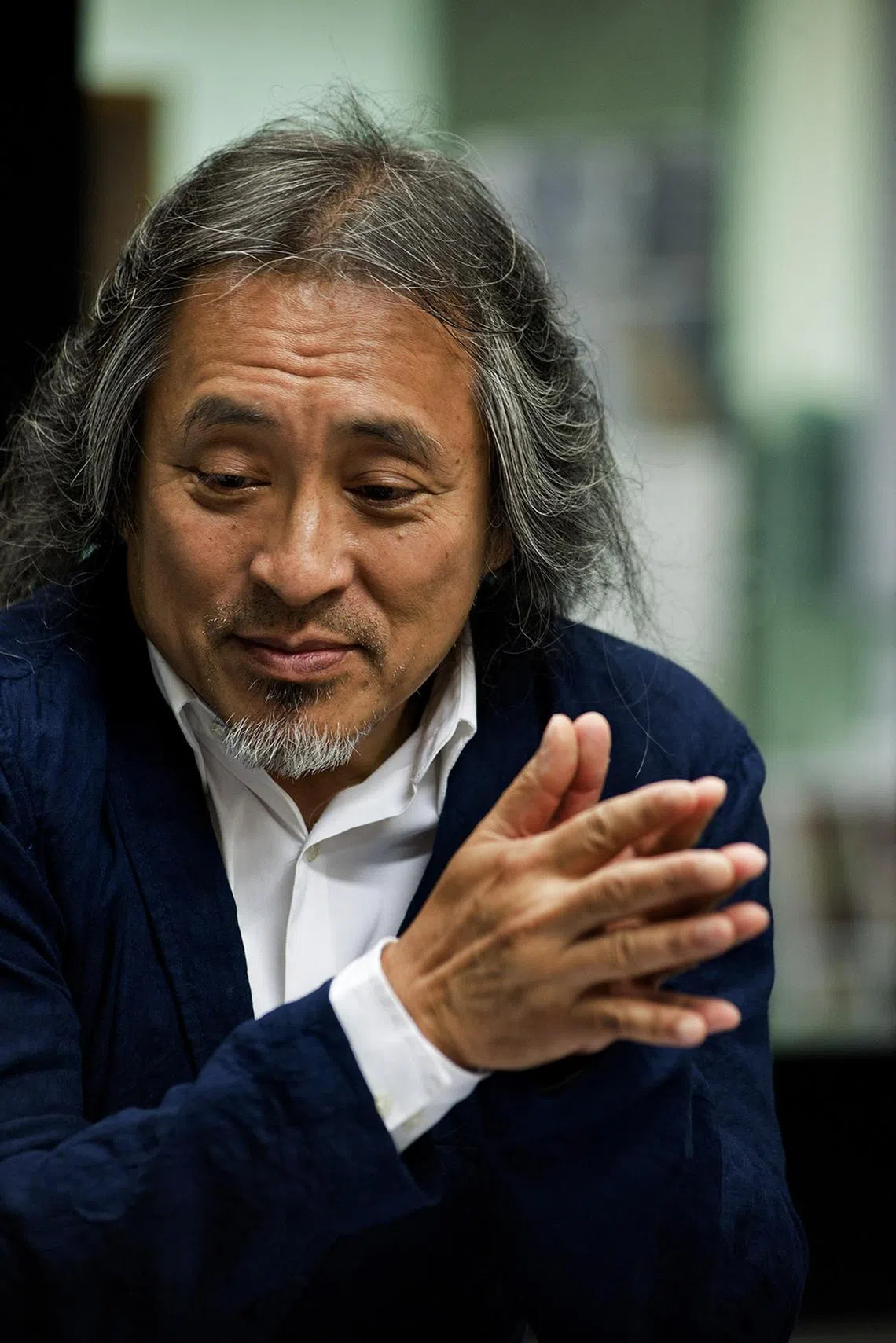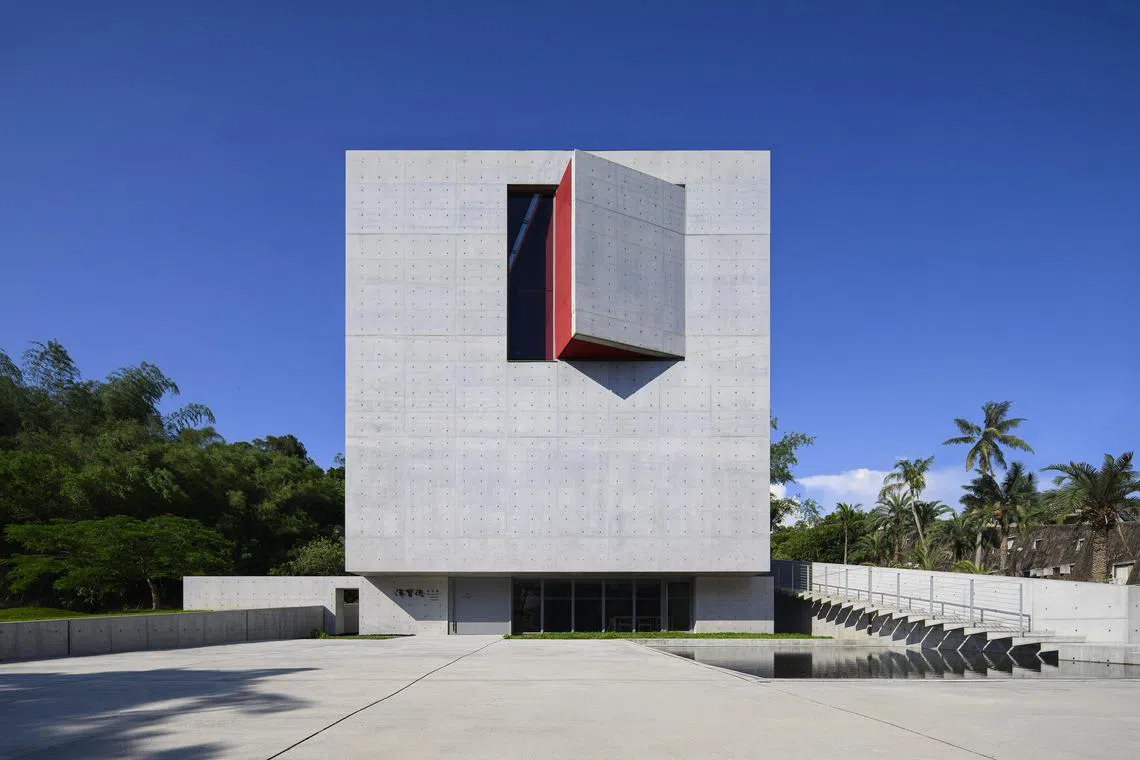Liberating architecture
Prominent Taiwanese architect Kris Yao talks about how crafting unique buildings is more important than his cultural heritage
WHEN KRIS YAO WAS IN primary school, he was so sickly that he ended up being mostly home-schooled by his mother. But to the renowned Taiwanese architect, this was a blessing in disguise.
“Because of my illness, I avoided the very strict education system during that time in Taipei which was very punishment-based,” says the founder of Kris Yao | Artech (KYA) in an online interview.
He recovered well enough to attend high school, and studied architecture at Tunghai University and the University of California, Berkeley, in America. The experience in these “very free” institutions, as well as his unencumbered childhood, helped cultivate his creative side. “As an architect, being able to imagine things, to think about what’s possible and even impossible, is very important,” he stresses.

Yao’s architecture certainly reflects a liberated mindset – no two are alike.
Inspired by Chinese calligraphy techniques, the Palace Museum Southern Branch in Chiayi is a dramatic commingling of darkened swirls, rising from a green blanket of rice and sugar cane fields. Contrasting that is the Han Pao-Teh Memorial Museum – a crisp, Brutalist cube-within-a-cube construction that is a canvas for emotive light and shadow theatrics.
For Yao, architecture is more than fulfilling structural, programmatic and functional requirements. It is also about “the things you don’t directly see, the emotions behind what is apparent, and the more poetic aspect of a building”. A sense of context is also necessary in creating unique buildings. “Every piece of architecture is on a specific place on earth, so we try to express the locality of the site, even the climate and terrain,” says Yao.
Inventive use of materials
There is a third component to his approach that weaves in these two aspects. “We love to express craft in buildings, so we very often invent new ways of using materials,” says Yao. The New Taipei City Art Museum in Yingge district, one of his most recently completed works, is a good illustration of Yao’s ability to bring out the best in materials and apply them thoughtfully.
The architecture juxtaposes a futuristic, undulating facade of brushed aluminium tubes with a highly tactile and dynamic ground level, sectioned with chiselled concrete rock chunks, carpeted with brick and sloping this way and that. Yao had designed it to evoke the nearby traditional streets of old towns Sanxia and Yingge.
“The choice of materials is very important,” Yao highlights. “One of the reasons modern architecture is sometimes criticised as very cold is that there are too many industrial materials used. There is no human touch, whereas classical architecture buildings are more (sculptural) and you can see the handicraft.”
The materials for the New Taipei City Art Museum have symbolic and form-making value. “One of the reasons why I used a lot of ‘pipes’ (to wrap the structure) was to make the building a little ‘blurry’, because a sharp-edged building is not the right thing to do in this landscape,” says Yao.
The project’s programme sought to democratise the museum’s typology with an “art village” comprising rooms for children’s classes, bookstores, cafes and other smaller exhibition spaces on the ground level. “It’s a free area for people to go; you don’t have to enter the main museum to enjoy these things. I thought that was an opportunity to create a new type of museum that is both a place for art and a place for people to just enjoy and get in touch with art (on an everyday level),” says Yao.
Telling other people’s stories
While Yao is of Chinese heritage and practises widely in Taiwan (his firm also has projects in China, America and places such as Kathmandu), he does not subscribe to a Chinese style. “I’m more interested in telling other people’s stories rather than my own. You can see from our projects that we don’t have a so-called identifiable or distinctive style; we try to express the locality, and the different requirements and aspirations of each client,” Yao states.
For example in Zhejiang, China, the Wuzhen Theater embodies the narrative of two lotus flowers with an interlocking brick and timber lattice shell. In turn, “the Lanyang Museum in Yilan, Taiwan, seeks to highlight the region’s dramatic landscapes of mountains and seas; the form of the building echoes the cuesta stones spread around the site”.
Meanwhile, the Yankuang Group’s Energy Trading Building in Hainan, China, not only embodies the local sub-tropical weather. Yao explains that it also “embodies the traditional Chinese concept of ‘four waters converging into the hall’ by bringing the rainwater inwards to irrigate the green plants inside the multi-layered courtyard, as well as the company’s corporate values of conserving energy”.
Local architectural scene
As one of the most prolific and talented Taiwanese architects today, what are his thoughts on the local architectural scene?
Says Yao: “For the private sector, I think the quality of architecture – both in terms of programme and materiality – has improved very much over the past decade or two. But personally, I would like to see more effort in creating meaningful spaces other than just luxuriously cladded mansions or office towers.”
Providing more opportunities for young, local architects could be one remedy for this, hence Yao hopes that the government can offer more opportunities for them to be awarded public projects. “Because the built environment is an important element in culture, and architecture for the public plays a crucial role, Taiwan needs more high-quality, appropriately sized, well-budgeted, locally created architecture.”
Having grown up in and contributed to shaping the skyline of Taipei, he has witnessed the city’s evolution over the past decades. “Taipei has changed very, very much since the 1950s, when people were poor and there were not many resources. It was a simple, hardworking society,” he reflects. The architecture then was equally basic “but it had its charms and as society developed, it became more international”.
Yao admires the small streets of cafes, parks and shops popping up all over the city as they make it more vibrant. Yong Kang Street is one such vicinity he frequents. “I always compare Taipei to Tokyo, but Taipei is more chaotic, and there’s a nice feeling in that slightly chaotic environment,” Yao says.
That environment is a perfect fit for a building such as the Taipei Performing Arts Center, comprising an odd mash-up of parts. KYA collaborated in this project with the lead architect OMA (Office for Metropolitan Architecture), a renowned Dutch architecture firm.
When it comes to contemporaries whom he admires, OMA’s founder and Pritzker Prize laureate Rem Koolhaas is one. “I had a good working experience with him,” he says. “He has a special way of looking at architecture, which is quite rare. It’s a way that is very eccentric, very sharp and also cuts deep into social issues. He is not only concerned about form, material, trends and spaces. I admire that a lot.”
By the same token, the Taipei Performing Arts Center which Yao designed may appear like a jarring piece of architecture within the Shilin neighbourhood, but Yao thinks its design is appropriate. “That project looks alien, but ultimately it fits the environment very well. People in Taiwan, even Taipei, are very informal. We go to theatres in sneakers and jeans, and we don’t care. So the building is just right for this Taipei-ness. It’s not pretentious; it’s very direct,” Yao explains.
Numerous accolades
“Not pretentious and very direct” are perfect ways to describe the architect himself. During the interview, Yao is easy-going, displaying neither bravado nor any sense that he is trying to prove anything. He simply enjoys making good architecture.
Not surprisingly, the firm’s accolade list runs long. KYA’s works have won acclaim globally, including the first Architizer A+ Awards in 2013 for the China Steel Corporation headquarters, and the 35th Taiwan Architecture Award in 2014 for his Water-Moon Monastery project.

Most recently, two projects – Han Pao-Teh Memorial Museum and the Hainan Energy Trading Building – received the prestigious International Architecture Awards given by the Chicago Athenaeum Museum of Architecture and Design.
In 2007, Yao received the Taiwan National Award for Arts – Taiwan’s highest honour for cultural and art disciplines. He also received the Chinese Outstanding Architect Award in 1997 and was awarded an Honorary Fellowship of the American Institute of Architects in 2014.
For all that recognition, Yao presents a humble front. He is also not worn down from the rigours of the profession that has been dubbed as an “old man’s profession” as most architects complete their greatest works in the later stages of their life.
“The most captivating aspect of architecture, for me, is that it allows me to navigate between the seemingly opposing realms of art and technology, and reason and emotion. The tension and paradox created by this coexistence have profoundly enriched my life.” Yao clearly enjoys his work even after so many decades of practice – the firm turns 40 this year.
A self-declared optimist, Yao reflects: “I consider myself lucky to have maintained enthusiasm and curiosity for architecture, allowing me to immerse myself in the world of design with great joy.”
Decoding Asia newsletter: your guide to navigating Asia in a new global order. Sign up here to get Decoding Asia newsletter. Delivered to your inbox. Free.
Copyright SPH Media. All rights reserved.






